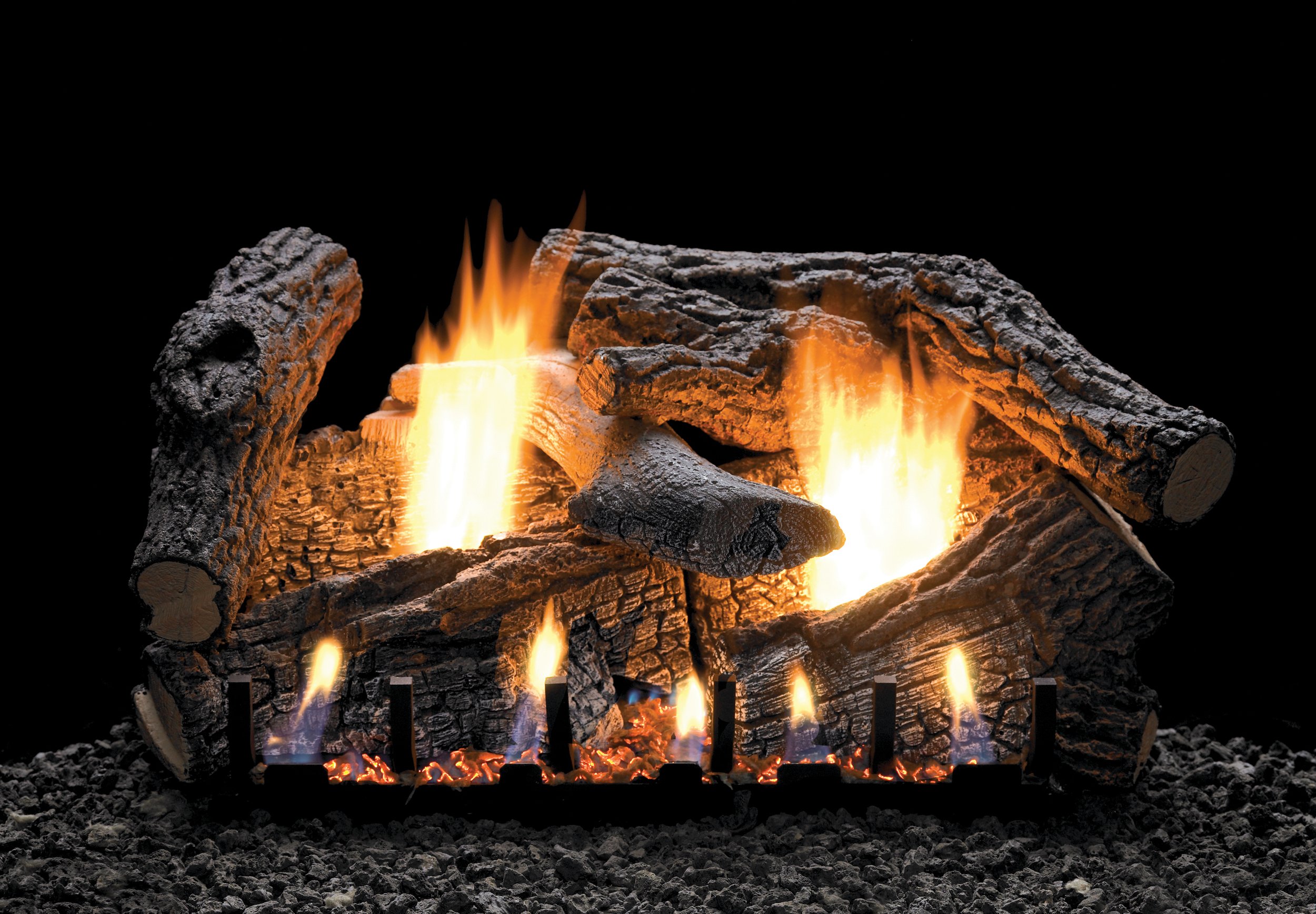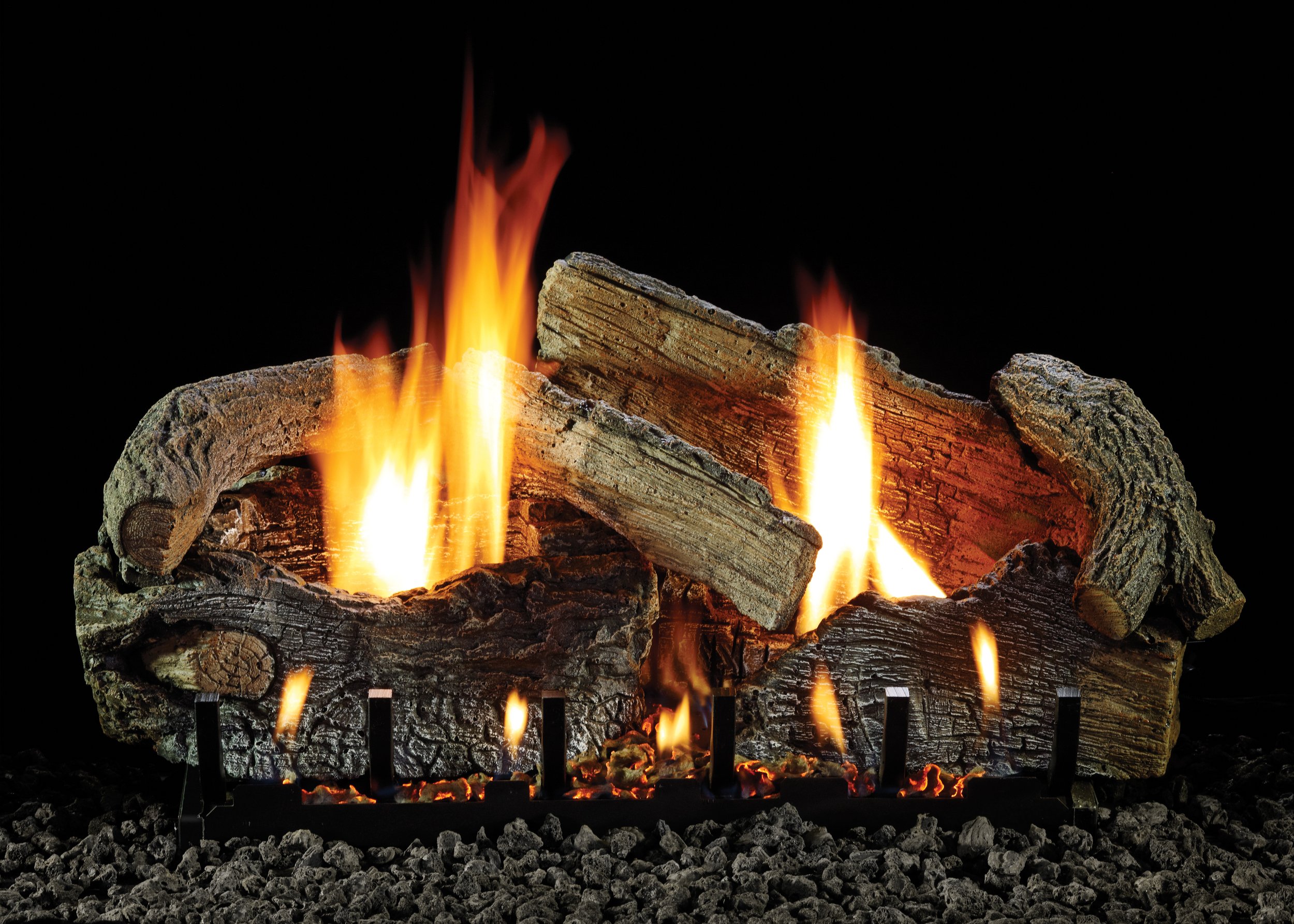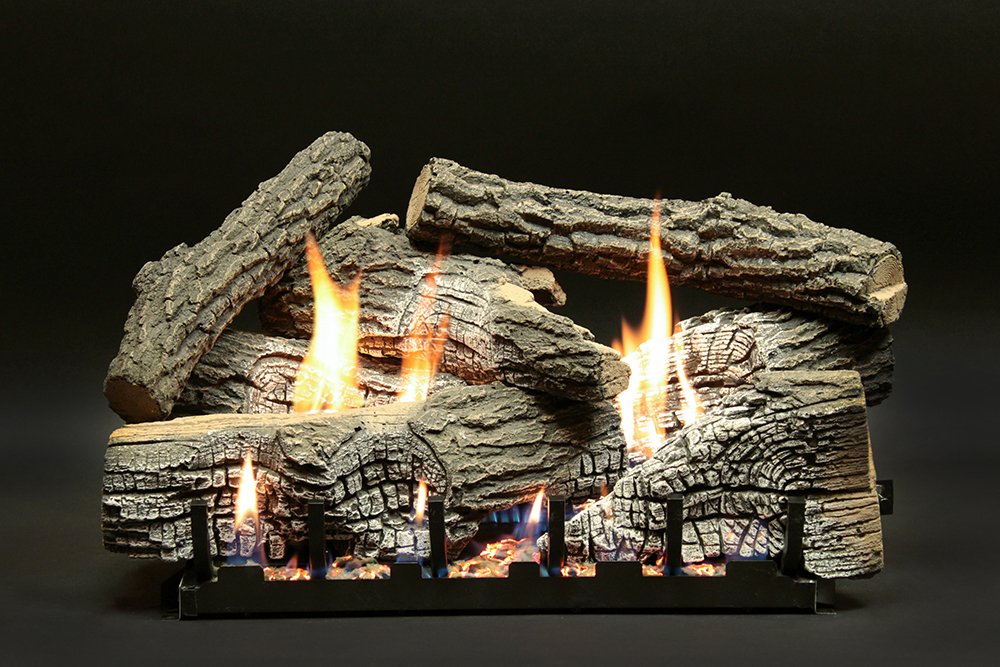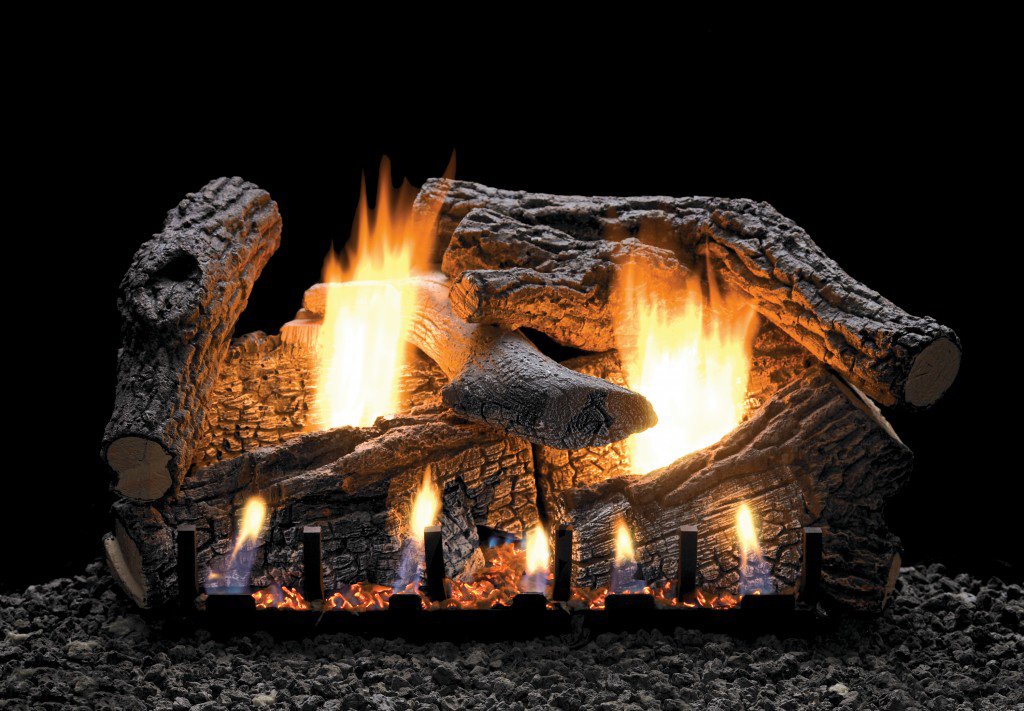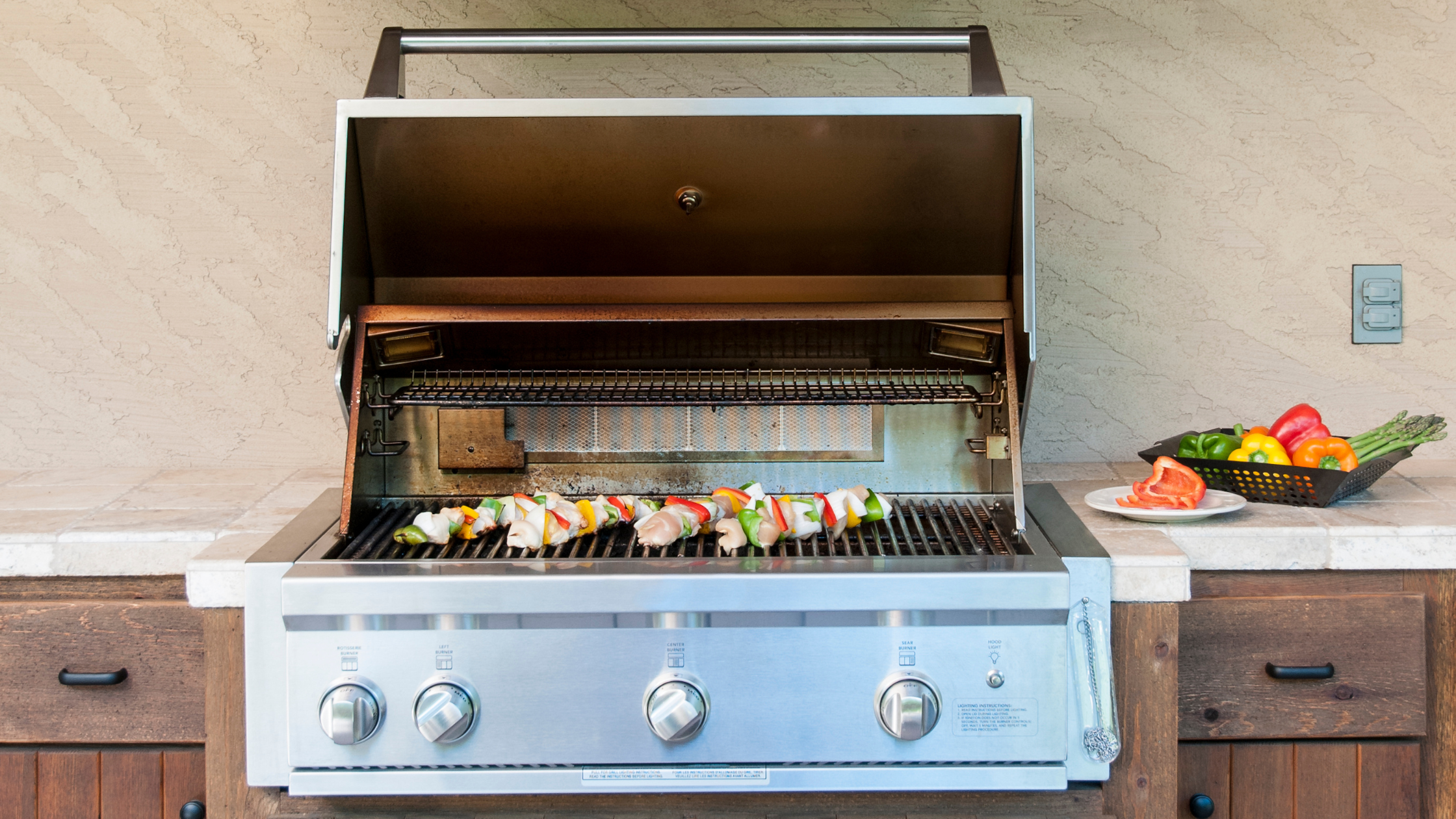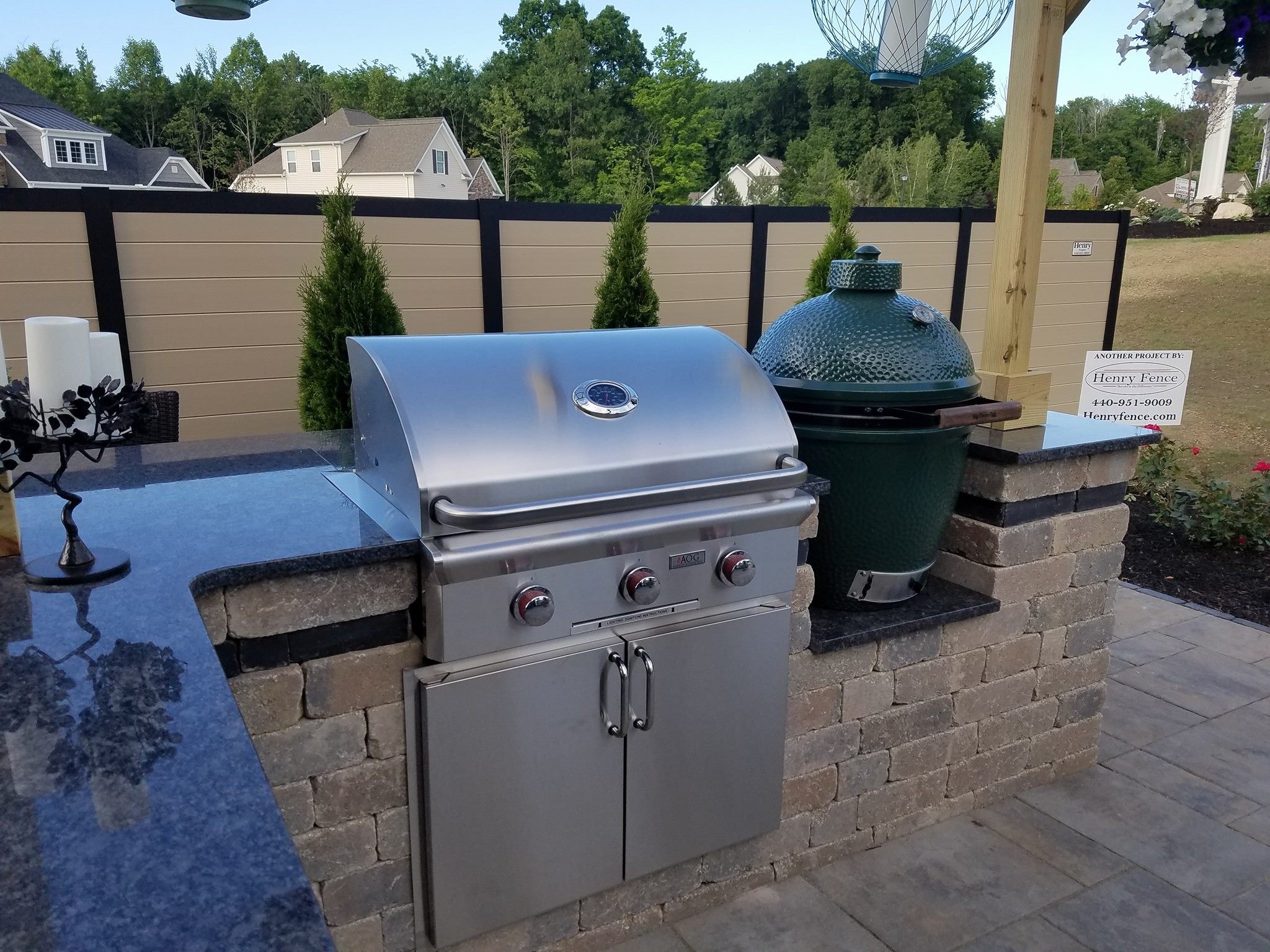Why Do Ventless Gas Logs Emit Odors? The Chemistry Behind It
Why Do Unvented Gas Logs Smell?
Methane, the purest form of natural gas, is made up of carbon and hydrogen molecules.
When burned, the carbon molecules combine with oxygen producing carbon dioxide.
The hydrogen combines with oxygen to produce water vapor.
Ventless (vent-free or unvented) gas heaters are designed to combine a specified volume of gas with an exact amount of air that theoretically results in complete combustion. The combustion process results in producing 4 major byproducts:
Water (H20) Hydrogen + Oxygen
Nitrogen Dioxide (NO2) Nitrogen + Oxygen
Carbon Dioxide (CO2) Carbon + Oxygen
Carbon Monoxide (CO)
If the gas doesn't burn completely then some of the carbon molecules remain as carbon, or soot. If you see soot in your home, carbon monoxide has been present inside your home!
In the real world, the natural gas flowing into our homes contains impurities that naturally result in byproducts of combustion. For example, methyl mercaptan is used as an additive to cause that rotten egg smell that warns you of a gas leak. When mercaptan is burned it creates sulfur dioxide which irritates the eyes and respiratory tract. Combine that with other impurities in your natural gas supply and what you get is a distinctive ventless gas smell. Some people can live with this smell but people more sensitive to this odor find it intolerable.
Nearly every homeowner burning a vent-free appliance in their home will eventually see stains; it's most often first noticed when you move a picture on the wall.
Brown or Yellow Residues
Usually seen on ceilings and walls, and most often concentrated closer to the vent-free appliance. Most often caused by tobacco smoke, cat dander and polyurethanes.The tar and nicotine caused by smoking attach to the water molecules produced by the ventless logs. Pet dander contains proteins that, when mixed with the air being supplied to the burner, result in incomplete combustion. The resulting impurities from incomplete combustion combine with the water molecules produced through the burning process. Polyurethane, used for sealing floors and wood furniture, is another culprit that emits gases into the home; these gases mix with the home's air that's being used to supply oxygen. Tobacco smoke, pet dander and polyurethanes all produce yellow to brown stains that you may see on your walls, ceilings and furnishings.
Gray Residues
Air fresheners emit a considerable amount of chemicals into the air. The scents used in air fresheners are generally not the organic ingredients you expect but chemical formulations meant to mimic floral or herbal smells. The cinnamon smell that comes out of the Glade Plug-In isn't really cinnamon; these chemicals remain in your home's air and are cycled through the vent-free log, causing incomplete combustion and a resulting kerosene type smell. Candles cause an even worse problem by emitting not only chemical scents but wax into the air, which is then cycled through the ventless gas logs, causing incomplete combustion and offensive odors. When you see grey residues - especially in corners and on windows - then candles or air fresheners are normally the culprit.
Black (Carbon) Residues
It's time for another reminder that where you see "soot" or carbon residues, CARBON MONOXIDE has been present, therefore when seeing soot on the ventless logs, in the fireplace or elsewhere in your home, it is imperative that the sooty residues be cleaned and the cause found and addressed. The burner will need cleaning to open the air holes in the gas burner tube and may need further service as well.
Before vent-free logs are installed in a fireplace it is extremely important to have the chimney AND the fireplace thoroughly cleaned. The heat and moisture caused by the gas logs WILL dislodge creosote and wood soot present. The wood residues can drop on the logs or burner as well as being carried by the home's air currents, then recycled through the ventless log burner so these impurities are now heated and burned again. Remember, this gas appliance is continually venting fumes and impurities into your home and being continuously recycled through the ventless gas burner. It is imperative that the fireplace and chimney be thoroughly cleaned before installing ventless gas logs.
Proper log placement is paramount to performance. The ceramic logs are designed by the manufacturer to sit on the burner in a VERY specific configuration. Misplaced logs will usually result in the yellow tip of the flame impinging on the logs, causing less complete combustion that results in a sooty stain. The soot at first is lightweight; it falls into the burner area and/or gets blown around in the fireplace and into the room to be recycled back through the burner resulting in burning soot, which makes the burner burn less and less completely. YOU SHOULD NEVER SEE SOOT on a ventless gas log set or ventless gas heater or elsewhere in your home. Only BLUE flames should ever touch a log.
Broken logs or chipped logs must be replaced when damaged. If your logs are light weight like styrofoam, they are made of ceramic fibers. Broken logs result in these fibers being burned through the gas log burner. Heavier ceramic logs must also be replaced if chipped, cracked or otherwise damaged or deteriorated.
Dirty burners are the primary reason you'll find soot stains. Any type of residues or air contaminants are cycled through the burner, incompletely burned then transformed into other chemicals that are then reburned again.
Gas requires a predetermined amount of air to create complete combustion. Unfortunately, every home has contaminants that will collect on the burner such as
lint
dirt
pet dander
carpet fibers
spider webs
airborne chemicals from air fresheners, furniture polish, window cleaners, new fabrics, candles
Humidity is a huge concern with any unvented heater. For every gallon of gas burned, you're essentially putting a gallon of water into the air. This water vapor is reburned through the ventless heater which can result in mold in your home. The mold spores are reburned too and are then redeposited throughout the home resulting in black dots or clusters. Naturally, it is very important not to use a humidifier to put more moisture into the air when using an unvented gas appliance.
Homes with radiant heaters such as baseboard heaters and radiators have more dust and debris than filtered heating systems. Keep your home cleaned especially well to reduce household dust that will be recycled back through a vent-free appliance.
Regular cleaning and maintenance of your ventless gas logs or fireplace is paramount to proper performance. DESA, manufacturer of the first ventless gas heaters, specified "The air passageways require cleaning a minimum of once prior to the start of the heating season and after each 2500 hours of operation or 3 months. If routine cleaning is conducted the product will operate as it was designed. The air passageways to the main burner and pilot must be kept clear of any obstructions to alleviate the occurrence of an improper combustion."
To Summarize:
High humidity caused by the water vapor produced by a ventless, vent-free or unvented gas heater leads to mold and mildew that irritates people with asthma, allergies and other respiratory conditions
Elevated levels of carbon monoxide can be DANGEROUS to diabetics and others with heart, respiratory or circulatory medical conditions.
Do not use vent-free appliances around babies, small children and pregnant women
Keep a window cracked nearby when using a ventless gas appliance, which helps dissipate fumes and water vapors
Don't use for more than 4 hours at a time or for more than 40 hours in a week
Follow the manufacturer's instructions for cleaning the burner AT LEAST twice a year or call in a qualified professional to perform this service for you


